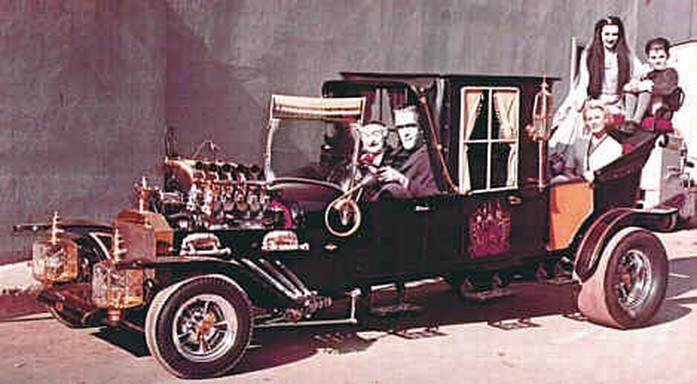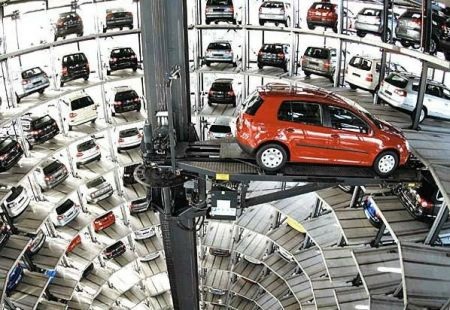|
Driverless Cars to Fuel Suburban Sprawl Apparently, the self drive car will continue our exodus from the city which began more than 2000 years ago, at least, with Rome. But if LA is the sprawliest city, the term does not mean what you think it means. More below the fold. Per the Census Bureau: Most Densely Populated Urbanized Areas
Los Angeles--Long Beach--Anaheim, CA 12,150,996 1,736.0 6,999.3 San Francisco--Oakland, CA 3,281,212 523.6 6,266.4 San Jose, CA 1,664,496 286.0 5,820.3 Delano, CA 54,372 9.9 5,482.7 New York--Newark, NY--NJ--CT 18,351,295 3,450.2 5,318.9 Davis, CA 72,794 14.1 5,156.6 Lompoc, CA 51,509 10.7 4,815.7 Urban Honolulu, HI 802,459 170.2 4,715.6 Woodland, CA 55,513 12.2 4,550.8 2010 Urban Area Facts - Geography - U.S. Census Bureau Where is Urbanized metropolitan New York? New York is barely more dense than Davis, CA? Look, face it, the urban planners, the smart planners, the progressives have spent decades feeding you porky's. LA is Americas most dense urbanized area, not New York. Yet they constantly call LA the Sprawl Capital of America. What does sprawl mean? Nothing, or anything, or more specifically, whatever they want it to mean. What Mims gets right: the self drive car will be MUCH cheaper, you will get your garage back, and you will not have to deal with DMV, fueling, repairs, washing, or anything else, unless you decide to own your own vehicle. Then costs will be much higher. The cars of tomorrow will initially look like cars today, but not for long. Just as the first autos aped carriages, the second generation did not, the carriage style quickly died and stayed dead, OK except for the Munster Mobile. You will be very unlikely to ride in share ride vehicles where you sit next to people you do not know like a transit bus. We don't like doing that, so we won't. Cars will be specifically designed for share ride applications, and they will have separated traveling compartments. No school buses for kids, and why travel to shop for commodities like groceries. They can be delivered by refrigerated vehicle. Amazon is not dying and we will shop more by Internet, so fewer and fewer trips will be necessary for more and more thing will travel by self drive vehicle. Integrating our deliveries would allow multiple deliveries to be combined into a single trip. All while you surf the Internet, or teach your daughter to knit, or your son to cook. Self drive cars are about 10 years away for significant market penetration. Do you really think most people will still be commuting? Maybe, but the onsite work model is dying, and the work remote model will increasingly replace the onsite model, or people will be automated out of particular onsite jobs. So, will you commute? For a while maybe, but not for long. He is also correct about Millennials, the young want action, lights, city, but once married, this begins to wane, quickly, and family kills this dead. What we really want is to return to the hunter gather tribe, a small group of people who we live with and whom we know closely. We would like to live in groups of about 100, with a few good social amenities near by. The comfortable self drive car will allow us to travel further to social amenities, since we can have a drink and talk, or Internet on the way to dinner. Also, the self drive car will be able to drive faster, with far fewer accidents. I suspect our housing will look a bit like a tiny Italian hilltop town, but with more detached single family homes, centered around some amenities. This is a large dollop of silly: "There is a raft of reasons I could be wrong. Carlo Ratti, director of MIT’s Senseable City Lab, says a coming study conducted in collaboration with Uber Technologies Inc. found that the denser a city, the easier it will be to live without a car once self-driving car services arrive. This isn’t complicated to understand—it is the same reason that Manhattan is full of cabs but getting one in Queens is next to impossible. If Mr. Ratti’s projections are correct, and self-driving cars can radically reduce traffic without cannibalizing existing mass transit—the hypotheticals pile up—it is possible that self-driving cars will make many cities livable in a way they aren’t now. Imagine if every U.S. city had a hybrid public-private mass-transit system on par with those in New York City or Washington, D.C., comprised entirely of self-driving vehicles." Huh? Who would want to cannibalize our existing mass transit, you know the stuff where we sit cheek to jowl with 20 of our closest stranger, in a dirty, rank, hot tube, while we spend 20 minutes going all of 5 miles. Oh how we love the jostling, the bumping the halitosis. Or would you want to ride in a safe, quiet, comfortable car all to yourself? OK, so we are cannibalizing existing transit. And whatever we do, don't allow the public to shanghai the self drive car to make it a public transit utility. Washing DC's subways are falling apart, increasingly killing people, and creating ever longer delays, this is not unique, the same is happening to BART in San Francisco, and MAX in Portlandia. Private stock will ensure maintenance, quality, and the desired amenities, and consistent access for the poor as well. The public will degrade service to all, cut service to the poor, excessively increase service to the middle class, and run everything into the ground while charging taxpayers huge amounts of money. Ratti might be untethered and flying high above the Earth, but Mims will have none of it. "'There’s an advantage in being dense so I don’t think we’ll see sprawl like in the 1950s and 60s,” Mr. Ratti says. But I am not betting on it. Americans are stubborn, and existing zoning regulations, roads and buildings are expensive and difficult to alter. As Mr. McDonald observes, one thing hasn’t changed over the past 100-plus years: The easier it is to get from point A to point B, the farther away from the center city people are apt to live. Even the era of self-driving cars can’t change that." The advantages to density are significantly outweighed by the lack of density, if this were not true humans would gravitate to density, they do not unless forced. It takes urban growth boundaries, and zoning, and restrictions to get people to live in dense cities. Allowed to live as they will, they naturally choose suburbs, exurbs, and rural lands, not cities. Progressives never allow facts to interrupt their beliefs. They know what is right, and what you need, and by god (little g), you are going to get it, good and hard! One thing he did not mention, is that electric autos have no chance without subsidies unless the hailed self drive vehicle become the most common form of transportation. This will allow the electric vehicle to shine, along with automated garages where the vehicles can recharge, and be robotically cleaned. The Munster Mobile And a Robotic Garage
Comments
|
AuthorMaddog Categories
All
|


 RSS Feed
RSS Feed